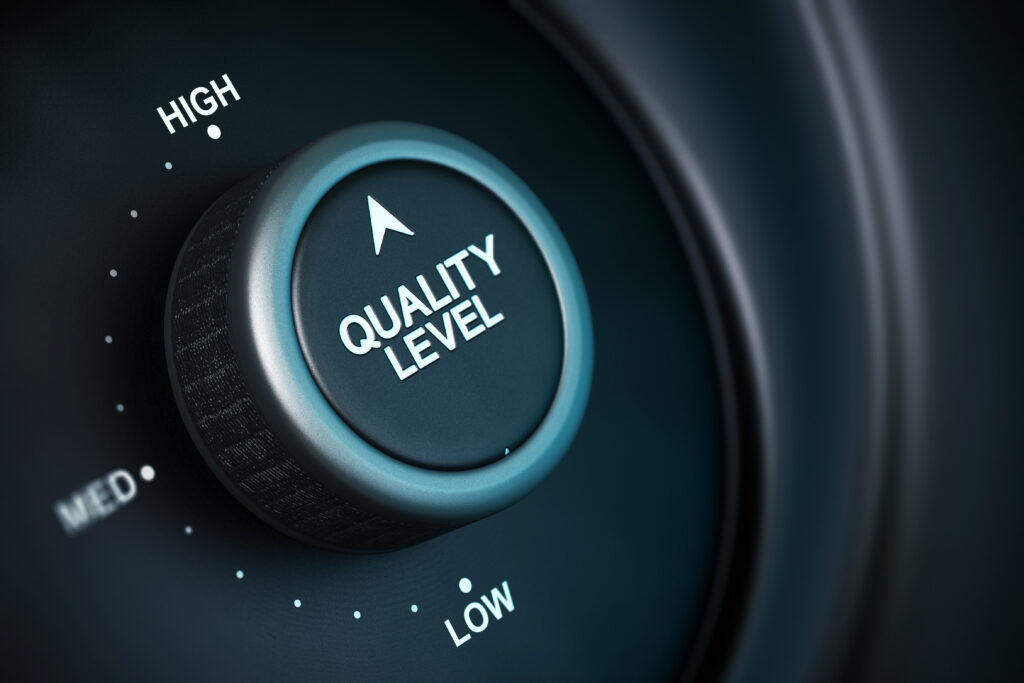Why quality measures are a crucial on-ramp to VBC
Technological advancements, data interoperability and innovation in quality measures reporting emerge as keys to making improvements under value-based care.

Technology is key to success as health systems and providers opt in to value-based contracts and away from fee-for-service reimbursement.
Accurate, properly documented, interoperable patient data is required to achieve CMS’s goal for 100 percent of Medicare (and the majority of Medicaid) beneficiaries to be enrolled in some type of accountable, or value-based, care arrangement by 2030. And because patient outcomes are at the core of value-based care, data must be aggregated and shared across the entire healthcare ecosystem.
According to a recent survey by the American Hospital Association, 51 percent of health systems plan to join an interoperability network. This commitment bodes well for broader information sharing across the industry to support these value-based goals. However, three specific hurdles still plague our industry today – stakeholders speak different data languages; data isn’t mapped consistently; and data isn’t interpreted congruently between providers and payers.
Given these three persistent challenges and a looming 2030 deadline, now is the time to improve our health information technology platforms to promote more accurate clinical data exchange. Health systems are already entering vast amounts of information, but the true value of EHR data is untapped without data standardization and optimization. One example of progress is the standardization of clinical data exchange for quality measures reporting.
Improved quality measures
Healthcare organizations can advance the transition to value-based care by continually improving the process of quality measurement reporting and monitorization of patient outcomes.
A proposed expansion of the US Core Data for Interoperability (USCDI) classes and elements announced by the ONC on June 2, 2023, harmonizes data elements for quality measurement that could be used to support reporting across a wide number of quality programs. The announcement also incorporates greater use of FHIR-based reporting. But for now, quality measures reporting is costly and time consuming for healthcare organizations with an increasing number of quality measures ahead.
A recent paper published by Johns Hopkins Medicine in JAMA identified 162 metrics used by the organization in the inpatient setting. The organization measured the cost of data collection and reporting for quality measures to be a staggering “$5 million in personnel costs plus an additional $600,000 in vendor fees.” Claims-based and chart-abstracted metrics were the most labor intensive with electronic metrics consuming far fewer people and costs.
Certainly not every organization is a world-renowned medical research center with 162 quality metrics. But the challenge is clear. Fewer metrics and a shift to electronic capabilities are necessary to support value-based programs and the overall pursuit of higher quality in healthcare.
Innovating the process in Maryland
One recent collaboration between CareFirst, a payer organization of about 3.4 million members, and LifeBridge Health, a health system with more than 1,200 beds and 120 physicians, emphasizes the progress that can be achieved by introducing innovation into the quality measures reporting process. Working together and in collaboration, the two organizations developed replicable solutions to re-engineer clinical data exchange.
Through their efforts, CareFirst’s providers delivered more accurate patient data, which resulted in a 63 percent improvement in HEDIS quality measures and less manual intervention. This type of collaboration between payers and providers is only possible through better information sharing.
Recognized by KLAS Research as a 2023 Points of Light case study, the data exchange between CareFirst and LifeBridge continues to reduce friction between the organizations, break down information silos and provide clinicians with an expanded view of clinical data. The organizations suggest the following four best practices to establish greater access to a broader set of patient data and build the foundation for easier quality reporting.
Aggregate data. Data must be included from all providers and across all formats. This includes data from outside physician practice EMRs and analog documents. Map non-standardized CCD data into one unified record to give both payer and provider the ability to track patients across settings and over time.
Check data accuracy. Use data experts and clinicians to check the quality of data received from various EHRs. Data in the source system should match that sent to the payer and used for quality reports.
Establish strong data governance. Communicate with all stakeholders involved and strategize for optimal technology design and development. Strong governance ensures the project proceeds in the right direction. It also takes into consideration new impacts on people and processes as organizations assume more risk-based contracts and expand quality reporting activities.
Educate your providers. As value-based care continues to advance, changes to quality reporting are inevitable. Keep physicians and other clinicians apprised of how improvements in data aggregation and quality impact their quality reports and potential reimbursement under value-based contracts.
The ability to track various quality measurements is integral to the provider-payer relationship. Leveraging vast amounts of data develops a more holistic, accurate understanding of patient care and outcomes. However, some health systems and payers are more adept at this than others. And after data is obtained from multiple stakeholders (not just the health system’s EHR), it must be standardized, consistent, and used congruently between providers and payers.
One EHR can’t do it all
While large EHRs and QHINs connect immense pieces of data, specialty solutions for payer-provider data exchange supplement the gaps. Niche technology partners zero in on the data formats, populations and data segments that can be overlooked in larger systems but are required for quality measures reporting. Examples include such things as PDF or handwritten documents faxed into the health system, OB/GYN information scattered across multiple documents within an EHR and specific data needed for risk adjustment reviews.
Through expanded data exchange, both payers and providers gain a clearer picture of patient history to improve quality of care, patient outcomes, and reimbursement. Foundations of data integrity, standardization, and interoperability remain the backbone of data exchange and serve as guides to health systems that are ready to follow suit.
Moliehi Weitnauer is the chief product officer for MRO.